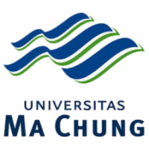印尼泗水黄龙体育会龙狮队的发展研究
A STUDY OF THE “SURYA NAGA” LION DANCE TEAM SPORTS CLUBS IN SURABAYA, INDONESIA
Abstract
【摘要】舞狮是源自中国的一种民间艺术活动,其形成经历了漫长的历史过程,慢慢成为了一种独特的中国传统文化。这种文化在中国得到广泛的传播,后随着华人移民到世界各地,舞狮活动也被带入,可以说是有华人的地方就有舞狮。而印度尼西亚作为一个拥有大量华人移民的国家,舞狮活动也在本国传播,舞狮活动在传播中结合吸收了当地的文化,有自己的特色,成为了印尼文化的组成部分。本文以泗水黄龙体育会舞狮团队研究对象,采用了访谈和文献研究方法,从舞狮的起源、表演动作、表演流程等对其进行了研究。研究表明:黄龙体育会舞狮团队自1978年成立到现在,经历了“新持序”时期,宗教改革,舞狮队从队员血统、舞狮仪式、训练方法到舞狮的功能都发生了很大的变化。
【关键词】舞狮,民间活动,黄龙体育会舞狮团队,印尼,泗水
Abstract
The lion dance is a kind of folk art activity originated from China. Its formation has gone through a long historical process and has gradually become a unique Chinese traditional culture. This kind of culture has been widely spread in China. Later, as Chinese emigrated to all over the world, lion dance activities were also brought in. It can be said that there is lion dance where there are Chinese. As a country with a large number of Chinese immigrants in Indonesia, lion dance activities are also spread in the country. The lion dance activities incorporate local culture in the spread, have their own characteristics, and become an integral part of Indonesian culture. This article uses the research object of the lion dance team of the “Surya Naga” Sports Club in Surabaya, using interviews and literature research methods to study the lion dance's origin, performance, and performance process. Studies have shown that since the establishment of the Lion Dance Team of the “Surya Naga” Sports Club in 1978, it has gone through the "new order" period and religious reform. The lion dance team has experienced a lot of changes from the blood of the members, the lion dance ceremony, the training method to the function of the lion dance already had a big change.
References
中国龙狮运动协会官网,众说纷纭话舞狮起源(2007)http://dragonlion.sport.org.cn/home/lswh/2007/0523/325170.html
江亚玉(2010)《辟邪与祈福——中国狮文化的渊源与演变》,兴大人文学报,第44期,209页(转引自东汉·班固,《汉书·西域传》台北:鼎文书局1987年)。
同3,217页(转引自汉·班固,《汉书·礼乐志第二》台北:鼎文书局,1987年)。
北魏.杨炫之,《洛阳伽蓝记》(北京:中华书局,学津讨原本,1991年)卷1,39页。
唐.段安节,《乐府杂录》(北京:中华书局,1985年),14页。
丁远,鲁越编,《康熙御定全唐诗下卷》(北京:国际文化出版公司),1364页。
广东省情网,中国龙狮协会官网,众说纷纭话舞狮起源 http://dragonlion.sport.org.cn/home/lswh/2007/0523/325170.html
董胜(2017).《千年传承——舞龙舞狮》.吉林. 吉林出版集团有限责任公司(国家图书馆,电子书)
邵雪明,聂守龙,于子骏,刘文龙(2020),《舞狮的起源及南狮主要动作分类调查研究》.中文科技期刊数据库(全文版)社会科学,57页。
朱增鑫(2019),《探析舞狮运动与中国传统文化》郑州科技学院体育学院,武术研究,第4卷,第1期,106页。
马新宇,贺小花,李乃琼(2016)《东盟舞狮文化研究——以越南、泰国、新加坡为例》.广州体育学院学报,第36卷,第二期,70-80。
薛源,罗杨(2013),《新规则下竞技北狮训练方法的对策研究》,河北体育学院学报,第27卷,第一期,95。
黄德慧(2012),《印尼舞狮“Tari Barong”(巴龙舞)与中国舞狮对比研究》,硕士论文,苏州大学2012年。
FadillahRamadhian. (2014年1月31日). 检索来源: https://www.merdeka.com/peristiwa/ini-awal-mula-kedatangan-orang-tionghoa-ke-nusantara.html.
HordeGolden. (2012年February月9日). Sepintas Tentang tentang Barongsaibarongsai. 检索来源: Budaya Tionghoa: http://web.budaya-tionghoa.net/index.php/item/1703-sepintas-tentang-barongsai
Nirahai (2008).“Analisa Pengaruh Barongsai Di Kelenteng Boen Tek Bio Terhadap Masyarakat Di Daerah Pasar Lama, Tangerang”《分析文德庙舞狮对丹格朗旧市场地区社会的影响》. skripsi S1 Universitas Binus, Sastra Cina.url : http://library.binus.ac.id/Thesis/RelatedSubject/2008-2-00384-MD
Siregar Zulfadli. (2016年2月28日). FOBI Sumut Ingin ingin Berkembangberkembang. 检索来源: Medan Bisnis Daily: http://www.medanbisnisdaily.com/news/read/2016/02/28/219072/fobi-sumut-ingin-berkembang/
Open Access Policy
This is an open access journal which means that all content is freely available without charge to the users or their institution. Users are allowed to read, download, copy, distribute, print, search, or link to the full texts of the articles, or use them for any other lawful purpose, without asking prior permission from the publisher or the author. This is in accordance with the BOAI definition of open access.
![]() This work is licensed under a Creative Commons Attribution-ShareAlike 4.0 International License.
This work is licensed under a Creative Commons Attribution-ShareAlike 4.0 International License.

















